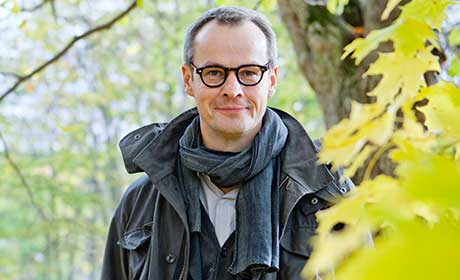Press release 20 May 2013
Is climate change leading to a delay in when leaves turn colour in the autumn? Pupils from across Sweden will be helping researchers determine how the climate is affecting the growing season of plants and the onset of autumn. This mass experiment is part of the science festival Researchers’ Night.
The ‘Autumn Experiment’ will lay the foundation for an improved understanding of how the climate is affecting and changing the seasons. During September and October, pupils in Swedish schools will be taking photographs and providing data to researchers, who hope to get answers to questions such as: Are deciduous trees being affected by changes to the climate? How does it differ between different parts of the country? Are there such things as autumn genes? How can satellites be used to track the development of autumn?
The mass experiment involves documenting the changes to autumn leaves. Pupils each choose some deciduous trees and report back on their status. The photographs and reports will then be analysed by researchers. Kjell Bolmgren, a plant ecologist at the Swedish University of Agricultural Sciences, is leading the project and will study the impact of climate change on different species by comparing the pupils’ data against historical data.
“It is just as important to understand how the signs of autumn are being affected as those of spring, but there is a lack of data on the autumn. This is, therefore, a unique opportunity to work with pupils across the country,” says Kjell Bolmgren, who designed the ‘Autumn Experiment’ in collaboration with VA (Public & Science).
The pupils will also have the opportunity to work with two other research groups. Stefan Jansson, a plant geneticist at Umeå University, will analyse the turning of leaves in autumn, with a particular focus on the genetics of aspen. Lars Eklundh, a physical geographer at Lund University, will be interpreting the changes to leaves in autumn on satellite images, with the help of the pupils’ data.
This is the fifth year that a mass experiment, involving data collection by pupils, is being carried out by the science festival Researchers’ Night. All schools in Sweden and pupils of all ages are welcome to participate. Participation is free of charge. The results and conclusions will be published in early 2014.
“In addition to increased knowledge about climate change, we hope that the ‘Autumn Experiment’ will give pupils an insight into how research is conducted and make them curious about the work of researchers,” says Cissi Billgren Askwall, Secretary General of VA (Public & Science), which coordinates Researchers’ Night.
On 27 September, in 27 locations across Sweden, people will be encouraged to try out some research, experiment, investigate and meet scientists. Children and young people are a particularly important target group although Researchers’ Night is open to everyone.
The European Commission has nominated the fourth Friday in September as Researchers’ Night across the whole of Europe. In Sweden events are run with the support of the European Commission, the Swedish Research Council and VINNOVA. The aim is to show that research is relevant to everyday life and that researchers are ordinary people with extraordinary jobs.
For more information and press images visit www.forskarfredag.se/pressmaterial or contact:
Karin Larsdotter, VA (Public & Science), Project Manager of Researchers’ Night Sweden, +46 70 255 38 91, karin @ va.se
Kjell Bolmgren, researcher at the Swedish University of Agricultural Sciences, +46 730 67 03 65, kjell.bolmgren @ slu.se

